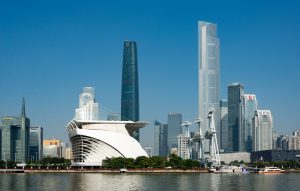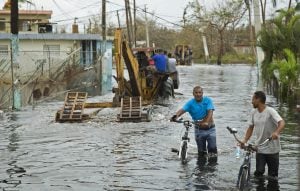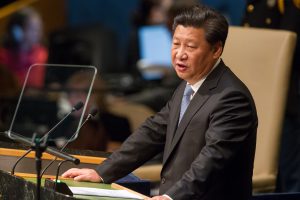The breakthrough commitment from world leaders at the United Nations Paris climate talks in 2015 to contain global warming to 2 degrees Celsius above pre-industrial levels sparked immediate celebrations, and doubts. Was it politically achievable? Was it enough?
For smaller and poorer nations, the answer to “was it enough?”, was always “no”. They demanded faster progress (and more funds) to counter rising sea levels that threaten to submerge island nations, and limit damage from storms and droughts to farmers, food supplies and social stability.
A group of smaller nations with support from the European Union and United States (subsequently withdrawn by the Trump Administration) extracted a further, more ambitious pledge, to pursue efforts to limit the temperature increase even further to 1.5 degrees Celsius.
An official report by the Intergovernmental Panel on Climate Change (IPCC) assessing the likely impacts of 1.5C of warming was promised by October 2018.
Warnings published
Expert reviewers nominated by governments and organisations gain access to IPCC drafts under confidentiality rules. It is not a public process. However, the leaked document, and its stark warnings, was leaked last month, prompting a deluge of comment.
Yet little of it focused on the opinions of China’s expert reviewers, even though China, which is currently responsible for producing 25% of carbon dioxide emissions entering the atmosphere, is key to implementation.
chinadialogue contacted several Chinese experts involved in either contributing to the draft report or reviewing it to ask what they think of its recommendations, the leak, and the 1.5C goal.
To reach zero emissions by 2050
- Low-carbon energy must replace coal power as the dominant energy source
- Coal consumption must drop 4-5%, annually
- Two thirds of energy production and consumption must be electric by 2100
Tough goal
The draft report warns that avoiding a 1.5C temperature rise is technically possible but only with a vastly accelerated switch from fossil fuels, implying drastic lifestyle changes.
To reach zero emissions by 2050, low-carbon energy sources need to replace coal-fired power as the dominant energy source by mid-century. Coal consumption needs to drop 4-5% annually, and two-thirds of all energy production and consumption must be in the form of electricity by 2100.
Even so, the report predicts that warming will breach 1.5C by 2050 but can then be reduced again by 2100, provided there is sufficient political will and the widespread adoption of some technologies that are largely untested.
The 1.5C target would still require geoengineering to either remove greenhouse gases from the atmosphere, or artificially reduce the earth’s temperature.
However, current geoengineering schemes such as deflecting solar radiation or storing carbon dioxide emissions underground, are untested at scale and may do more harm than good.
What Chinese experts think
Jiang Kejun, a researcher with the National Development and Reform Commission’s Energy Research Institute, was one of four Chinese scientists who contributed to the report.
Like others around the world, he stresses that the IPCC report remains a draft, subject to alterations.
Several experts have pointed out that the report has been produced in a hurry, compressing the usual four-year timeframe for Assessment Reports into just two years. The report was commissioned in April 2016 at the IPCC’s meeting in Nairobi, to be submitted for formal review by governments in October 2018.
Fu Sha, an assistant researcher at the National Centre for Climate Change Strategy and International Cooperation, who is reviewing the report, said the tight timeframe means there has been scant time to complete new research since the publication of the IPCC’s 5th Assessment Report in 2013. This means there is little new evidence to base the new report on.
Furthermore, Fu Sha pointed out, it is difficult for existing climate models to precisely determine the difference between global average warming of 2C target and that of 1.5C.
Risks to land use
Like others, Fu Sha has concerns about the feasibility of achieving the 1.5C scenario, and about the unintended consequences that might arise from the use of new technologies.
For example, the use of bioenergy with carbon capture and storage (BECCS), in which biomass is burned and the carbon emissions captured, could be used to remove carbon dioxide from the atmosphere. However, BECCS poses a number of risks to biodiversity, the water cycle and land use, especially in poor and developing countries short of arable land.
“Particularly in countries like China that don’t have much land per person, growing biomass could impact on food security,” she said. Even if land that is unsuitable for growing food crops is used, there will still be extra pressure on water resources. The experience of bio-diesel serves as a warning of the complexities.
Prototypes not ready
Most carbon capture and storage projects around the world today are pilot projects, with full commercial viability still a distant prospect, cautioned Feng Xiangzhao, another Chinese reviewer, and deputy head of the climate change policy department at the Policy Research Centre for Environment and Economy, a thinktank linked to China’s Ministry of Environmental Protection.
The extra cost of switching to the challenging 1.5C target are also a concern. Indeed, the 35 nations forming the High Ambition Coalition, which is pressing for the 1.5C target, came together out of the pre-Paris campaign for richer countries to pay more towards the conversion costs faced by poorer ones. It includes the EU and formerly the US, but not India and China.
He Jianwu, deputy director of the development strategy and regional economy research office at the State Council’s Development Research Centre said that growing nations need to consider, “low income populations who can’t afford to pay for clean energy.”
China’s rushed replacement of coal with natural gas and electricity left some rural households shivering through below zero winter temperatures in northern China in recent months.
However, Jiang Kejun, believes that though the 1.5C target is extremely challenging, it isn’t entirely out of reach if cities respond quickly by adopting measures to reduce greenhouse gas emissions.
Major Chinese cities have already set themselves ambitious carbon targets. For example, Guangzhou aims to become a world-class environmental city by 2050, he said.
Whatever happens, the report is set to be one of the most talked about climate change documents of 2018, sparking another round of speculation and reflection on the fate of the planet.








